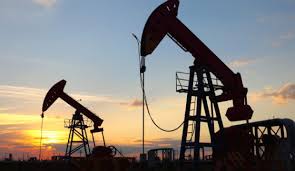
MUSCAT: Rising oil prices will not halt austerity in Oman, but its residents might, analysts say.
Experts agree austerity measures will continue to bite deep into next year but a non-oil mindset and more small business launches may just bring the diversification required to weather the oil price storm.
In 2016 oil prices slumped as low as $27 per barrel from over $100 at their highest, shaking global economies, including that of Oman’s. Job losses, benefit cuts, cancellations of projects, new taxes and cuts in state expenditures in many nations followed.
Many people living in oil dependent countries have never experienced cuts and austerity measures, but those very people could be the captains required to steer Oman out of trouble, one senior analyst in the Sultanate belileves.
There is renewed hope of a resurgence in oil prices following a production cut agreement between the Organization of the Petroleum Exporting Countries (OPEC) and non-OPEC countries, agreed to during the second week of December. Oil prices have since gone up, with Oman crude trading at $52.51 on Thursday.
Experts in Oman say that residents will need to tighten their purse strings next year, as austerity measures will continue to hamper the economy’s recovery.
According to reports by the Institute of Chartered Accountants, this is a direct consequence of the slowdown in the growth of Oman’s gross domestic product (GDP), which is expected to contract to just 1.7 per cent in 2017.
“This definitely is a big problem, because it affects the local purchasing power of people, and given the fact that the GDP growth rate is going down, you will have the country going through a slump, with less investments being made,” said Ramanuj Venkatesh, assistant accounts manager at Larsen and Toubro.
“This means you could have taxes, because the economy needs to recover. By taxing people, it means they have less disposable income,” he added.
This was seconded by Vahid Ubaidullah, assistant director of the professional studies department at the College of Banking and Financial Sciences.
“The quality of life will come down, and there is a pressing need for people to innovate. This is where you need to have a substitution for imports, and where small and medium enterprises can help, so that Oman can spur its growth rate,” he said.
Taimoor Khan, chief investment officer of Seagull Industries, said that people in Arab countries have never been tested before by the economic factors confronting them today.
“At this stage of the market’s growth, people will be forced to adjust their personal spending habits in a more conservative direction, which will have negative consequences for all businesses that operate in sectors such as luxury, travel, entertainment, and others,” he added.
However, Alkesh Joshi, director of tax advisory services at Ernst and Young, said Oman has been presented with a great opportunity to diversify its economy. “This is a direct reflection of low oil prices, and we are now talking about low oil prices for a longer period of time. It is unlikely that oil prices, which were in excess of $100 a barrel, will come back to that, so the impact of low prices on the economy is gradually being felt,” he said.
Kanaga Sundar, head of research at Gulf Baader, said that 2017 was likely to be very similar to 2016, in terms of revenue and spending. “Although increased oil prices offer a strong cushion, and we are looking at an average price of oil of above $50 in 2017, compared with $40 in 2016, the budget will remain similar.
“I believe there will be focused spending on projects where real income can be generated,” Sundar added.
“It will take at least three to six months before any impact is felt on the ground, so we can hope that any effect regarding jobs, and more will be felt by June,” he added.
Oman posted a budget deficit of OMR4.81 billion ($12.5 billion) in the first 10 months of 2016, as plunging revenues from crude oil exports began affecting the government’s fiscal balance.
Ahmed Al Hooti, board member of the Oman Chamber of Commerce and Industry, said that if oil prices continued to rise, the country will face fewer problems. “The government would be able to continue the projects that they were lacking the commitment to finance, and the private sector would easily be able to get loans, compared to how difficult it was to take out a loan this year because of high interest rates,” he stated.
“There should also be a continuance of guiding government expenditures, and the Sultanate should continue with development projects without slowing down or stopping,” he said, adding that $50 per barrel would be acceptable, but the ideal price should be over $60.
When asked what the situation might be if the prices of oil does not rise, Al Hooti said that it could be even worse than in 2016.
“It will be bad, worse even, where the state will need to obtain loans, internationally or internally, to cover the deficits. If they don’t get such loans, then the government will stop their projects, which will affect the private sector,” Al Hooti explained.
He said that the expectation is that the state will be fully committed to the private sector, and encourage it in presenting project ideas for 2017, and “muster all its power to implement the ideas and commitments of Tanfeedh.”
Further, Mohammed Shafiqul Islam Bhuiyan, a businessman, said that business houses should focus on non-oil products in 2017.
“Then we will not feel the heat, even if the prices of oil go down,” he said.
Other businesses say that Oman should start developing projects that were announced in 2016. “There should not be any delay of projects in 2017, which will help us in the long run,” Mohammed Kabir, another businessman, said.